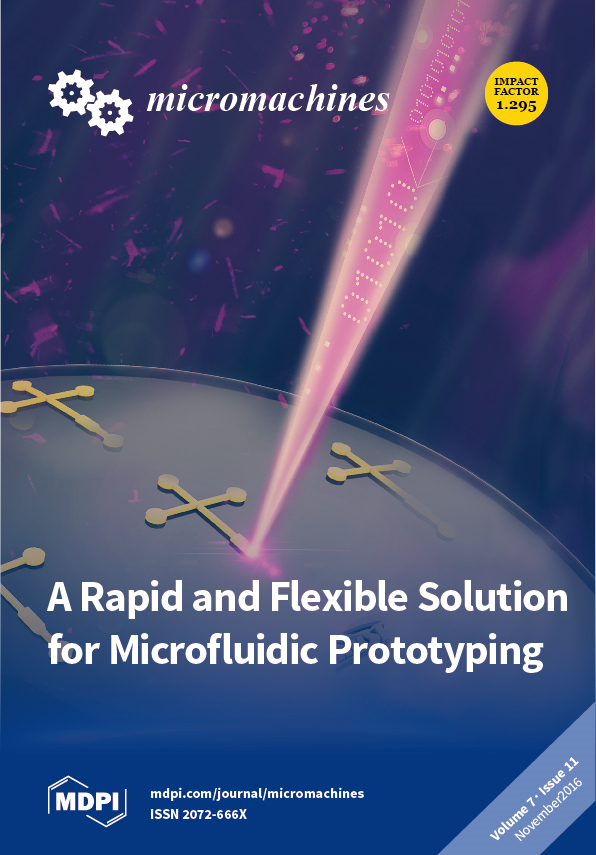This paper describes the design, fabrication and characterization of electrothermal bimorph actuators consisting of polysilicon on top of thick (>10
) silicon dioxide beams. This material platform enables the integration of actuators with photonic waveguides, producing mechanically-flexible photonic waveguide structures that
[...] Read more.
This paper describes the design, fabrication and characterization of electrothermal bimorph actuators consisting of polysilicon on top of thick (>10
) silicon dioxide beams. This material platform enables the integration of actuators with photonic waveguides, producing mechanically-flexible photonic waveguide structures that are positionable. These structures are explored as part of a novel concept for highly automated, sub-micrometer precision chip-to-chip alignment. In order to prevent residual stress-induced fracturing that is associated with the release of thick oxide structures from a silicon substrate, a special reinforcement method is applied to create suspended silicon dioxide beam structures. The characterization includes measurements of the post-release deformation (i.e., without actuation), as well as the deflection resulting from quasi-static and dynamic actuation. The post-release deformation reveals a curvature, resulting in the free ends of 800
long silicon dioxide beams with 5
-thick polysilicon to be situated approximately 80
above the chip surface. Bimorph actuators that are 800
in length produce an out-of-plane deflection of approximately 11
at 60
dissipated power, corresponding to an estimated 240
actuator temperature. The delivered actuation force of the 800
-long bimorph actuators having 5
-thick polysilicon is calculated to be approximately 750
at 120
.
Full article






